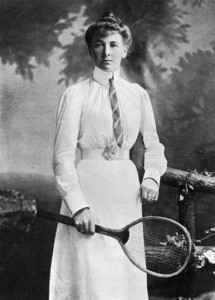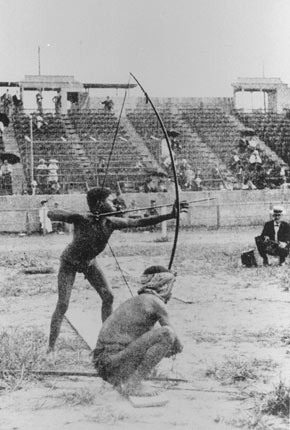Although the rumor mill was in action for several weeks noting that this would occur, Toyota officially signed on today to be a TOP Sponsor of the Olympic Movement for the 2017-2020 and 2021-2024 Olympiads. This is a game changer in many ways.
The figures announced are that Toyota will provide support to the IOC equal to $835 million (US) over 8 years. In the most recent Olympiads TOP Sponsor support has been in the $100-$150 million range per Olympiad, but Toyota is increasing this to the $400-$425 million range.
Below we give the details of all the TOP sponsors since the program began in 1984. TOP originally stood for The Olympic Programme, but more recently has been changed to The Olympic Partners. TOP was devised by then IOC President Juan Antonio Samaranch and Vice-President Dick Pound as a way to generate income for the IOC and make it less dependent on the largesse of US television networks. The plan was to make it exclusive, with only a few sponsors, and only one in each product category, but to charge dearly for that exclusivity. The idea was based on the sponsorship policy that Peter Ueberroth used to make the 1984 Los Angeles Olympics so financially successful.
But paying dearly is relative. In the 1985-88 Olympiad, TOP brought in about $96 million total, while companies now must pay more than that each simply to be a member. Official figures are not always announced anymore so the numbers below from 2004-2016 must be considered estimates, but they are certainly close for total revenue generated by the IOC. You will note that for TOP VIII (2013-16) total revenue to the IOC was about $1.15 billion (US). The Toyota support for TOP IX (2017-20) will already push those numbers to $1.56 billion (US), a 35% increase.
But if the Toyota deal becomes more standard, and other companies are pushed to provide support in the same range, this could completely change Olympic economics for Organizing Committees (OCOGs). Let’s assume that the IOC can get $300 million per Olympiad now per company, still less than what Toyota is paying, and that it gets between 10-15 TOP sponsors each Olympiad (there have been a maximum of 12). That now brings the numbers up to the $3-4 billion range per TOP program (perhaps more), an increase in the 250-300% range.
Further, the IOC provides money from the TOP program to OCOGs with most recent figures being about 50% provided to the OCOGs and a large percentage of the rest to the NOCs (International Federations receive IOC money from television sponsorship money). The IOC has kept only about 10% of TOP dollars for its own operating expenses. Assuming those expenses are relatively fixed, increasing perhaps slightly more than inflation, the IOC could now afford to provide a larger percentage of TOP income to OCOGs and NOCs, and this would be a larger percentage of an already greatly increased corpus.
While recent summer host cities have been receiving money in the $1.0-1.5 billion range from the IOC, via TOP income and television contracts, as seed money to get started with their operating expenses, it is possible, with this new paradigm for TOP sponsorship that this could greatly increase, perhaps more than even double. That would make the option to host Olympics again more financially viable to host cities.
A few other things about the Toyota sponsorship. Its becomes the first automobile manufacturer to become a TOP sponsor. It is the 30th company to become a TOP sponsor and its sponsorship of TOP is also a landmark for the IOC, making it the 100th sponsorship overall, as many companies have been sponsors multiple times. Coca-Cola, Matushita/Panasonic, and VISA have been TOP sponsors at every Olympiad since the program’s inception, although Coca-Cola and VISA have not yet signed on for 2021-24. As Michael Payne, former director of IOC marketing, pointed out in a tweet, it will be interesting to see how the Toyota deal affects negotiations for future TOP sponsorship with Coca-Cola and VISA.
[table]
TOP,I,II,III,IV,V,VI,VII,VIII,IX,X,
End,1988,1992,1996,2000,2004,2008,2012,2016,2020,2024,Totals
3M,x,x,,,,,,,,,2
Acer,,,,,,,x,,,,1
Atos Origin,,,,,,x,x,x,x,,4
Bausch & Lomb,,x,x,,,,,,,,2
Bridgestone,,,,,,,,x,x,x,3
Brother,x,x,,,,,,,,,2
Coca-Cola,x,x,x,x,x,x,x,x,x,,9
Dow Chemical,,,,,,,x,x,x,,3
Federal Express,x,,,,,,,,,,1
General Electric,,,,,,x,x,x,x,,4
IBM,,,x,x,,,,,,,2
John Hancock,,,x,x,x,,,,,,3
Johnson & Johnson,,,,,,x,,,,,1
Kodak,x,x,x,x,x,x,,,,,6
Lenovo,,,,,,x,,,,,1
Manulife,,,,,,x,,,,,1
Mars,,x,,,,,,,,,1
Matushita/Panasonic,x,x,x,x,x,x,x,x,x,x,10
McDonalds,,,,x,x,x,x,x,x,,6
Omega,,,,,,x,x,x,x,,4
Philips,x,x,,,,,,,,,2
Proctor & Gamble,,,,,,,x,x,x,,3
Ricoh,,x,,,,,,,,,1
Samsung,,,,x,x,x,x,x,x,,6
Schlumberger SEMA,,,,,x,,,,,,1
Time/Sports Illustrated,,x,x,x,x,,,,,,4
Toyota,,,,,,,,,x,x,2
UPS,,x,x,x,,,,,,,3
VISA,x,x,x,x,x,x,x,x,x,,9
Xerox,,,x,x,x,,,,,,3
# Sponsors,8,12,10,11,10,12,11,11,12,3,100
Money ($US [millions]),$96,$172,$279,$579,$663,$866,$958 ,$1155 ,$1560 ,$900 ,$7228
[/table]

